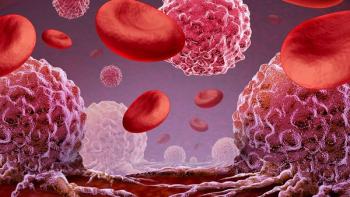
Breaking Down the Evolving Treatment Landscape of GIST

Key Takeaways
- The PEAK trial investigates Sutent combined with bezuclastinib as a potential second-line treatment for GIST, with results anticipated soon.
- IDRX-42 shows promise in heavily pretreated GIST populations, with a 50% response rate in second-line treatment, prompting further trials.
Dr. Vinayak Venkataraman recently sat down with CURE to discuss the evolving treatment landscape for gastrointestinal stromal tumors.
Dr. Vinayak Venkataraman, medical oncologist and director of Sarcoma Pathways at Dana-Farber Cancer Institute in Boston, recently sat down with CURE to discuss the evolving treatment landscape for gastrointestinal stromal tumors (GIST).
An instructor in medicine and affiliated faculty at the McGraw/Patterson Center for Population Sciences, Harvard Medical School, Venkataraman shared insights on emerging second- and third-line therapies, notable investigational agents in development, and novel approaches for underserved patient populations.
CURE: Could you highlight any ongoing or recent clinical trials in GIST that you are particularly excited about?
Venkataraman: Yes! There are two trials that I think are probably the most excited about. One of them is called the PEAK trial, and it was a phase 3 trial looking at the combination of Sutent (sunitinib) plus another KIT inhibitor called bezuclastinib (CGT9486), and comparing that to Sutent in predominantly the second line of treatment.
Most patients who are diagnosed with GIST will all be treated with Gleevec (imatinib) as the first-line treatment. But oftentimes, usually, on average, two years after starting treatment, their GIST develops resistance to the Gleevec, and Sutent is conventionally the second-line treatment in that population. This trial was looking at, “Can we do better than [Sutent] in the second line?”
We're hoping to get a readout of that trial very soon. … I imagine, if not at the ESMO Congress, it would be presented at the 2026 ASCO Annual Meeting this upcoming year. That is exciting because that could be a potential second-line treatment.
Can you discuss any additional emerging second- and third-line treatment approaches in development for patients who have progressed after initial therapy , and which investigational agents or combinations you believe show the most promise at this time?
There's another novel compound called IDRX-42 which was tested in a heavily pretreated population, including in the second line, where it had a very encouraging objective response rate in that heavily pretreated population and almost a 50% response rate in the second line. That was presented at our Connective Tissue Oncology Society meeting last year in San Diego, and based on those results of how well patients were doing on the second line, we're going to be part of a large multicenter trial looking at Sutent versus IDRX-42 in that second-line population.
Again, these are two potential novel compounds or novel combinations that could potentially change our standard of care in the second and third line of treatment. So those are the ones we're most excited about.
Additionally, there are some phase 1 trials looking at the combination of Gleevec and a menin inhibitor, because biologically in the lab, there's been some synergy seen in patients who have progressed on Gleevec on its own. Additionally, then are some pan-KIT inhibitors coming out that are also in clinical trial.
Can you explain how research is approaching treatment for underserved patient populations with GIST and whether there are any targeted therapies being investigated for patient subgroups?
Finally, as I mentioned, most gastrointestinal stromal tumors are driven by mutations in KIT and PDGFR, but in 10% to 15% of cases, those proteins are not impacted. A common type that we see in young adults is called SDH-deficient gastrointestinal stromal tumor, or SDH-deficient GIST. There is interest in [this topic], and we are hoping to launch a trial looking at, an FGFR inhibitor, because biologically, in the lab, it has been seen that that seems to be a vulnerability. If you block the FGFR receptor in patients with SDH-deficient GIST, there does seem to be some anti-cancer effect.
Previously, there was an FGFR inhibitor called regorafenib that did have some encouraging initial results but wasn't taken forward by the company sponsor. So, the hope is that with this different FGFR inhibitor, we'll see some more encouraging results.
Transcript has been edited for clarity and conciseness.
For more news on cancer updates, research and education,





